Author(s): Shweta Pandey* and Sumit P
Recruitment analytics has become an indispensable tool for modern recruiters and talent acquisition managers, transforming traditional hiring processes through data-driven insights that enhance decision-making across the recruitment lifecycle, from candidate sourcing to final selection. In today’s competitive talent market, leading organizations often utilize separate Human Capital Management (HCM) systems and Applicant Tracking Systems (ATS) to manage the various stages of the recruitment process. However, these systems frequently lack advanced reporting capabilities, prompting the need for external analytics tools to process and analyze transactional data. This paper examines the analytics and reporting functionalities embedded within HCM SaaS (Software as a Service) platforms and explores the potential for developing a customized talent analytics solution tailored to organizational needs. By importing and integrating transactional data from ATS applications into a unified analytics framework, companies can improve their ability to identify trends, optimize sourcing strategies, and make more informed hiring decisions. Additionally, this paper evaluates the specific tools and customizable solutions provided by Workday, such as Data Catalog, Prism Analytics, and the Business Intelligence (BI) connector offered by Greenhouse. These technologies are discussed in terms of their ability to facilitate data integration and deliver real-time, actionable insights, ultimately enabling organizations to enhance the precision and effectiveness of their recruitment efforts through the application of advanced analytics.
Access to timely and accurate data is crucial for any business, particularly in the context of recruitment and talent acquisition [2,3,6,7]. Historically, recruiters and hiring teams operated under assumptions regarding the efficacy of their hiring methods, but the advent of sophisticated software and analytics tools has transformed this paradigm [2,3,7]. The integration of data-driven recruiting processes allows for informed decision-making throughout the hiring cycle, from candidate selection to the development of hiring plans and productivity reporting [2,3,5]. Data-driven approaches in recruitment have demonstrated a tendency to enhance efficiency, reduce costs, and improve overall hiring outcomes [2,3,5-7].
Recruitment analytics involves the discovery and interpretation of significant patterns related to sourcing, selection, and hiring processes [6,8]. By leveraging data, organizations can identify and elucidate patterns, such as high turnover rates within the initial months of employment, which may signal discrepancies between job descriptions and actual roles, selection errors, or ineffective onboarding procedures [8]. Recruitment analytics can address various queries, including:
The prevalence of separate Human Capital Management (HCM) and recruitment systems in contemporary organizations necessitates seamless integration between these systems [1,13]. Leading companies have transitioned from relying solely on Applicant Tracking Systems (ATS) for transactional data reporting to adopting advanced systems with extensive data repositories and analytics capabilities [4,6,7]. These advancements provide a more integrated view of talent acquisition processes, incorporating data from Core HR, talent management, learning and development, performance management, and compensation systems [4,7]. Such integration enables a comprehensive understanding of new-hire and high- performer demographics and their impact on talent outcomes.
A recruitment analytics solution aggregates and processes data from various sources to identify patterns that can inform the effectiveness of a company's hiring strategy [9]. Typical data sources include the ATS, Customer Relationship Management (CRM) systems, Human Resources Information System (HRIS) data, satisfaction surveys, branding data, and job advertisement platforms [6,7,9].
Recent advancements in HR Software as a Service (SaaS) platforms have introduced robust analytics and reporting tools, providing deep insights into workforce data [10]. Modern HCM SaaS products offer advanced analytics capabilities essential for strategic HR decision-making [10]. As HR evolves from a primarily administrative role to a strategic function, these platforms have become indispensable. Integrating ATS data with the reporting and analytics features of HCM SaaS systems can significantly enhance recruitment analytics by consolidating data within a secure HCM environment. This integration streamlines the reporting process, reducing the need for multiple separate analytics tools and facilitating a more cohesive approach to managing recruitment data.
In contemporary practice, organizations frequently employ separate Applicant Tracking Systems (ATS) and Human Resources Information Systems (HRIS) to foster and sustain high levels of employee satisfaction [1,13]. ATS platforms are integral to recruitment teams, streamlining the hiring process, managing candidate data, and ensuring regulatory compliance. However, many organizations fail to fully harness the potential of their ATS data [4,7]. The true power of this data lies in its ability to provide actionable insights that can drive strategic decision-making [12].
Integrating ATS data with an analytics platform can significantly enhance recruitment processes by revealing patterns and trends that reflect the effectiveness of recruitment strategies [6,7,9,12]. This advanced level of analysis goes beyond basic metrics, enabling data-driven decisions that align with organizational objectives [12]. To fully capitalize on these insights, it is essential to analyze ATS data alongside data from Human Capital Management (HCM) systems.
Creating comprehensive analytics reports requires seamless integration of ATS (e.g., Greenhouse) and HCM (e.g., Workday) data with an analytics platform. Although many ATS and HCM solutions offer APIs for integration with cloud-based analytics platforms, the process involves development and configuration efforts [8]. Additionally, given the confidential nature of the data housed within ATS and HCM systems, ensuring data security during both the transfer and while the data resides in analytics platforms is critical [8]. Organizations must implement robust data security measures to ensure that data security [8] protocols are consistent with those applied within ATS and HCM systems, protecting sensitive information and avoiding unnecessary access that could jeopardize the organization's reputation.
Furthermore, utilizing a separate analytics platform incurs additional costs, whereas many HCM SaaS products offer built- in reporting and analytics capabilities. A custom, comprehensive solution that integrates ATS data with HCM data, generates analytics using the combined data, and leverages the in-built security mechanisms of the HCM system would address these challenges. Such a solution would streamline the reporting process, enhance data security, and eliminate the need for additional analytics platforms, thus optimizing recruitment strategies and aligning with organizational goals.
The Business Intelligence Connector (BIC), offered by Greenhouse, is tailored for organizations with advanced analytics needs that seek a flexible, hands-on approach to data analysis [14]. This tool allows companies to perform complex reporting analyses that extend beyond the capabilities of standard Greenhouse Recruiting or Greenhouse Onboarding reports, enabling the integration of recruiting data with other external data sources [14]. Designed for entities with sophisticated analytics and business intelligence requirements, the Business Intelligence Connector provides enhanced insights into an organization’s Greenhouse data [15].
To utilize the Business Intelligence Connector, organizations must first enable it within their Greenhouse system [15]. They are then required to select a data destination method, choosing between Amazon S3 or Redshift for data reception. The Business Intelligence Connector will subsequently execute a nightly ETL (Extract, Transform, Load) process according to the chosen method [15].
The following figures illustrate the procedure for enabling the Business Intelligence Connector in Greenhouse, with Redshift used as the ETL method for demonstration purposes in this article.

Figure 1: BIC option under Configure > Dev Center in Greenhouse [15].
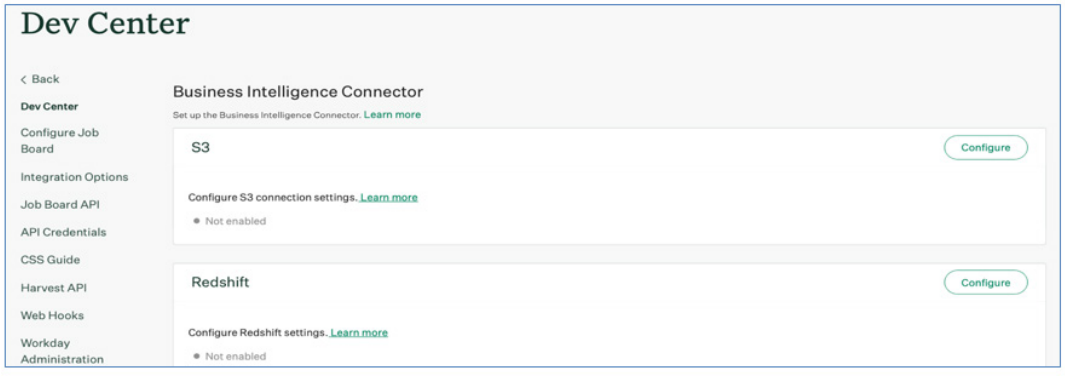
Figure 2: ETL Methods Available for BIC in Greenhouse [15].
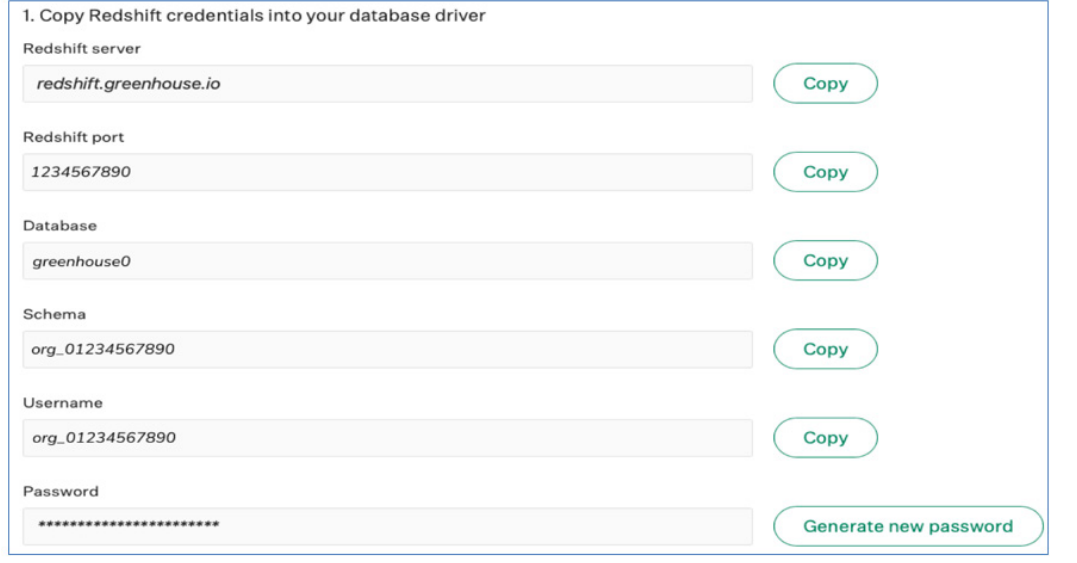
Figure 3: Business Intelligence Connector Configuration for Redshift [15].

Figure 4: IP Addresses to allow List Access to your Business Intelligence Connector Data [15].
Once enabled, the Business Intelligence Connector will facilitate a nightly ETL process, delivering the most up-to-date data to the organization [15]. This data can then be leveraged with advanced data development tools to perform in-depth analyses of organizational processes. Structured Query Language (SQL) can be employed to extract ATS data from the Redshift database, which can then be uploaded into Workday Prism tables. This integration allows for a comprehensive analysis by combining ATS data with data already present in Workday, offering deeper insights and more informed decision-making.
Workday: Prism Analytics Data Management Workflow Workday Prism Analytics enables organizations to seamlessly analyze both Workday and non-Workday data without the need for exporting to external data warehouses or business intelligence (BI) applications [11,16]. This integration streamlines the analytics process, making it faster, more secure, and allowing users to act directly on insights within the Workday environment [11,16]. The following section outlines the key phases involved in the data management workflow, from transforming raw data (whether internal or external to Workday) to generating visualizations and reports within Workday.
The initial phase of the data management workflow involves importing data into the Prism Analytics Data Catalog, where data analysts can access both external and Workday transactional data. This is accomplished by creating tables, which are Prism Analytics objects that store data in a tabular format with a defined schema. Once the table is created, a data change task is employed to load or modify the data within the table [16].
Phase 2: Creating Derived Datasets for Data Transformation Once the data is ingested into the Data Catalog, organizations can create derived datasets to transform, enrich, and merge the data. Derived datasets provide the processing logic necessary for preparing data for analysis and facilitate the iterative process of data transformation. These datasets allow for complex data operations, including blending data from various tables and other derived datasets, ensuring the data is refined and ready for detailed analysis [16].
Workday does not automatically apply security to data objects within the Data Catalog. When external data or Workday data is imported, the security restrictions previously applied are removed. Therefore, organizations must manually apply security using Workday’s security domains before making the data available for analysis. This ensures that data visibility is appropriately restricted, taking advantage of Workday's robust and configurable security model, and safeguarding both internal and external data within the analytics environment [16].
Organizations can select which data within the Data Catalog is made available for analysis by creating Prism data sources from tables or datasets. Once a Prism data source is created, it is populated with data and secured according to field-level, record- level, and value-level security configurations. This ensures that only authorized users can access specific portions of the dataset, enhancing data governance [16].
Once a Prism data source is established, Report Writers can utilize the data to create discovery boards and generate reports. This phase allows for deep analysis and the visualization of insights derived from both Workday and non-Workday data, empowering organizations to make informed, data-driven decisions directly within the Workday environment [16].
The following figures illustrate the configuration and setup details for tables, data change tasks, derived datasets, as well as the discovery boards and reports. These visual representations provide a step-by-step guide to effectively managing data within Workday Prism Analytics, from the initial ingestion of raw data to the final stage of creating actionable insights through visualizations and reports.
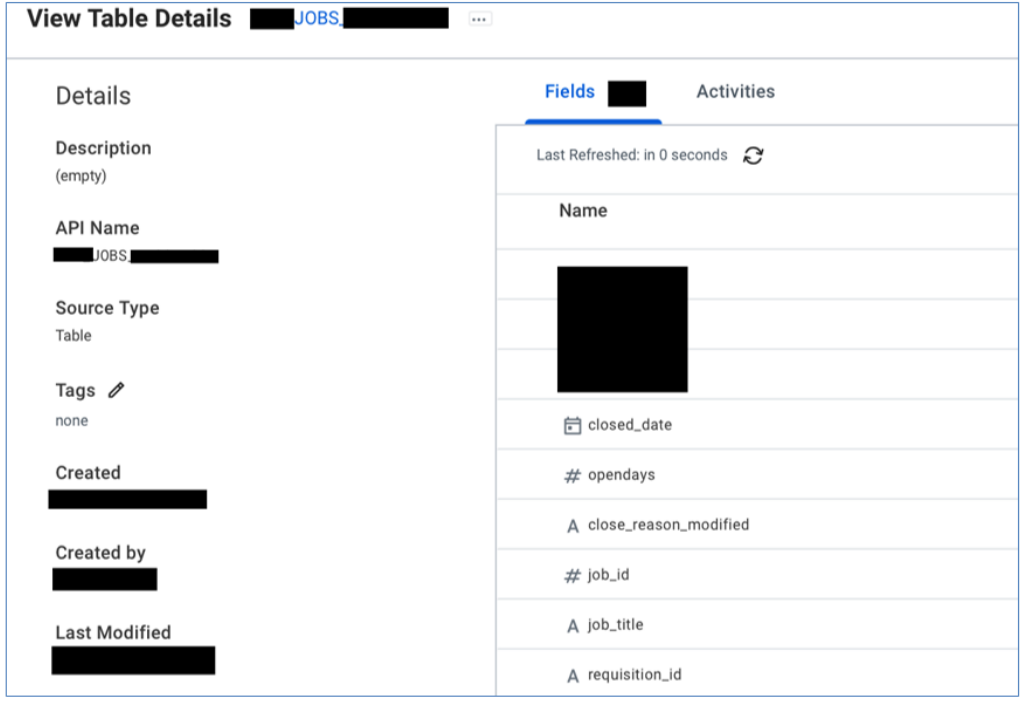
Figure 5: Table Configuration for External Data Storage
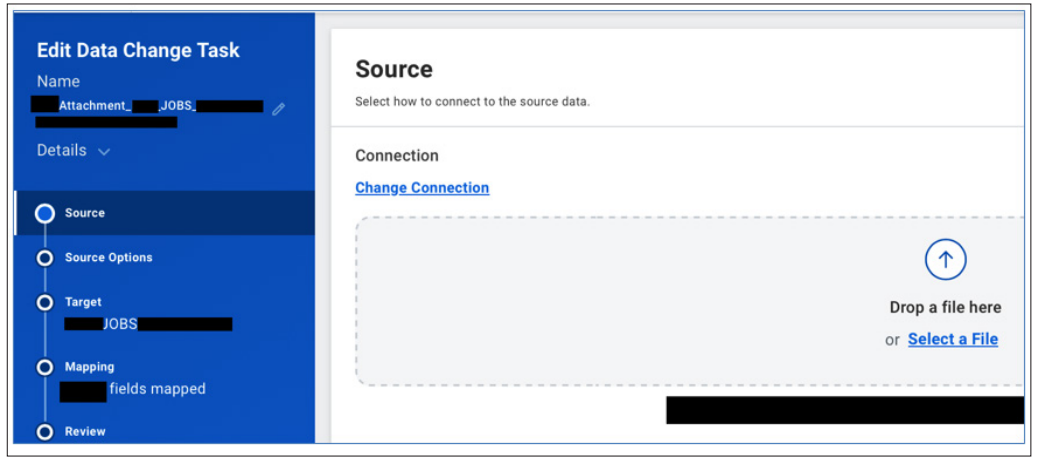
Figure 6: Data Change Task to Load or Change Data in the Table
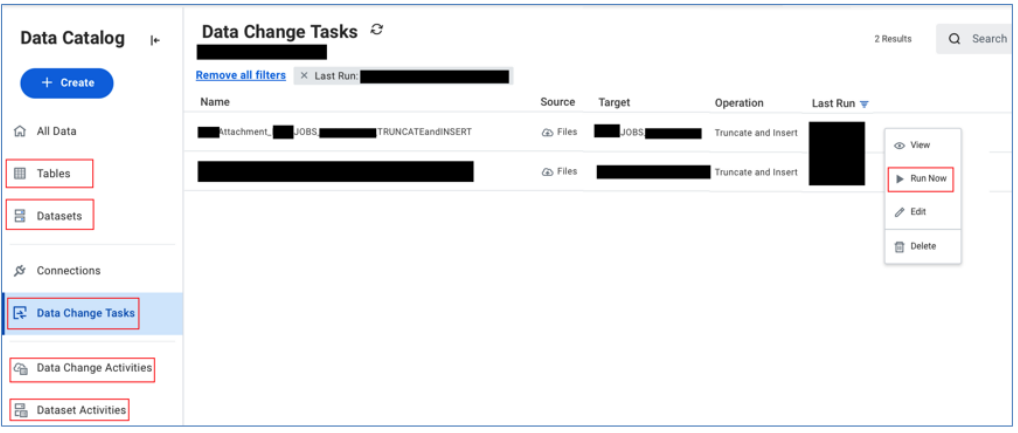
Figure 7: Data Catalog Report with Various Components
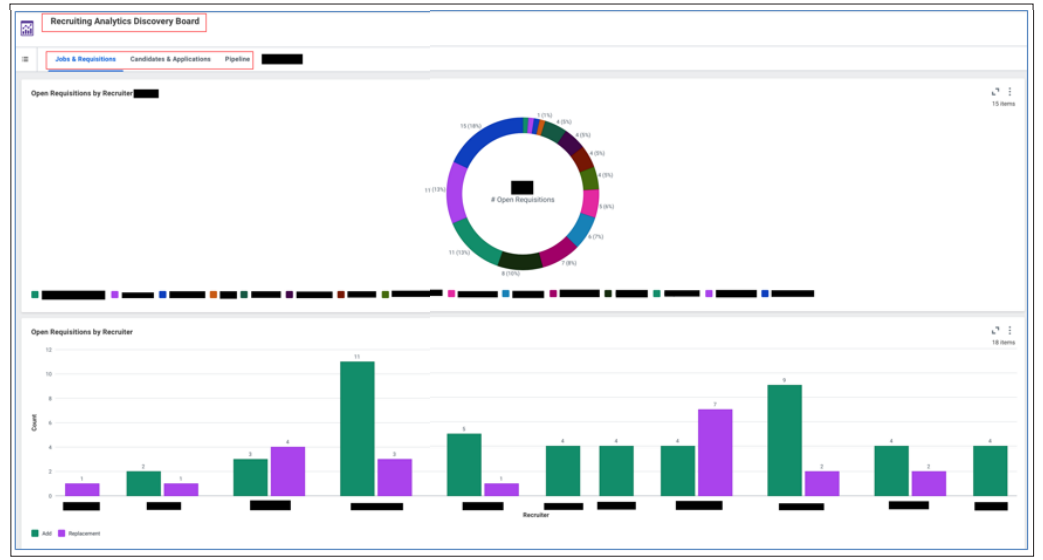
Figure 8: Recruitment Analytics Dashboard Utilizing Discovery Boards in Workday through Prism Analytics
The process begins within the Greenhouse system, where raw ATS data such as candidate applications, interview feedback, scorecards, and other recruitment-related details are stored. Once the Business Intelligence Connector (BIC) is enabled in Greenhouse, this ATS data is transferred to the Redshift cloud database through a nightly ETL (Extract, Transform, Load) process. Structured Query Language (SQL) scripts can be developed to extract specific datasets from Redshift, including information on open and closed requisitions, recruiter and coordinator details, candidate data (e.g., education and job history), the number of applications, and jobs applied for.
These datasets can be exported as CSV files for upload into Workday Prism. SQL scripts can also be scheduled using a simple integration to extract and place the CSV files in a secure FTP (SFTP) location. From there, the files can either be manually imported into Workday Prism or automatically loaded from the SFTP location using Workday’s delivered functionality. Once the data is integrated into Workday Prism, it becomes available for further processing and analysis.
The imported ATS data can be combined with the existing Workday data and exposed to users via Discovery Boards, generating analytics reports directly within Workday. Importantly, the data imported into Workday Prism benefits from Workday’s robust, configurable security mechanisms, ensuring that it is fully protected in accordance with organizational policies. This integration allows for seamless analysis and reporting, delivering actionable insights from combined ATS and Workday data sources.

Figure 9: Process Flow
The custom solution leveraging the Business Intelligence Connector in Greenhouse, Redshift Cloud database, and Workday Prism Analytics provides a seamless integration between these systems, facilitating efficient data flow from Greenhouse to Redshift and subsequently to Workday. This integration substantially enhances the organization's recruiting analytics process by streamlining and securing data workflows for extraction, transformation, analysis, and visualization. The result is improved transparency, accountability, and robust reporting capabilities that serve as a foundation for informed decision-making and future reference.
This integrated solution thus provides a powerful and secure foundation for advanced recruiting analytics while maintaining cost efficiency and operational simplicity.
Recruitment analytics has revolutionized talent acquisition by enabling organizations to derive actionable insights from data, leading to more informed hiring decisions. The integration of Applicant Tracking System (ATS) data with Human Capital Management (HCM) systems within a unified analytics framework offers significant advantages in understanding recruitment performance, optimizing strategies, and improving overall hiring outcomes. This paper explored the integration of ATS and HCM data, focusing on the custom analytics solutions provided by Greenhouse’s Business Intelligence Connector (BIC) and Workday Prism Analytics. The implementation of these solutions streamlines data workflows, enhances security, and eliminates the need for separate analytics platforms.
In conclusion, integrating ATS data with HCM systems through tools like Greenhouse’s BIC and Workday Prism Analytics empowers organizations to enhance their recruitment analytics while ensuring cost efficiency, data security, and operational simplicity. The combined approach provides deeper insights into recruitment patterns and enables more effective decision-making, ultimately improving the precision and effectiveness of the hiring process.
